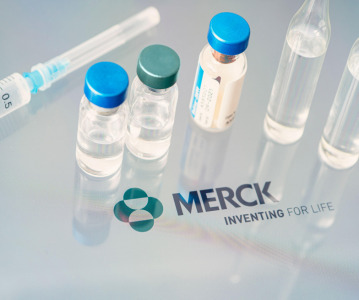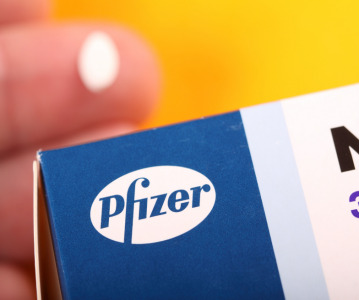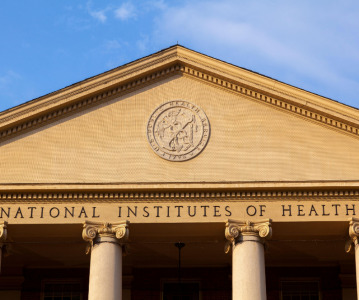Planning for supply chain resilience

Engagement-based strategy could increase resilience of pharma supply chain.
The COVID-19 pandemic cast a spotlight on pre-existing vulnerabilities in pharmaceutical supply chains, as well as creating new issues. Now as the world recovers, longer lead times, shipping disruptions, product shortages, and rising costs continue to impact the sector.
This was the subject of the presentation ‘Where’s the Sugar’ by Tom Wilson, Global Business Development Lead at Pfizer CentreOne, during CPHI North America last week. Wilson used the analogy of baking a cake and lacking the requisite ingredients to describe disruptions to pharmaceutical supply chains.
He said: ‘When we think about the supply chain challenges that we’re facing right now, our expectation is that these challenges are going to be with us for a while. And it may not be the same challenge this month that it was a year ago. It may not be the same challenge a year from now or two years from now, but we do think there’s a great disruption taking place.’
Wilson noted that disruptions are occurring in regional and global supply chains, are exacerbated by a shortfall in the talent marketplace, and cannot be remedied by simple solutions.
He advised building resilience into supply chains by formulating an effective strategy, adding that this allows organisations to remain ‘agile and nimble’.
‘If you understand your systems, you have the ability to know where your opportunities are in that system. You know where your risk factors are in that system, and you can adapt and mitigate to both,’ he said.
Wilson noted that organisations can choose to adopt one of two main operating models – a procurement-based model or an engagement-based model.
Wilson believes an engagement-based model, which hinges on transparency and fluid communication, allows for greater adaptability.
What this entails, according to Gallup Supplier Engagement research, is that companies adopt a proactive approach to measuring and managing the emotional connections that drive supplier engagement. Research indicates that companies who do this can reap substantial economic gains - including higher quality, improved planning, improved product development, greater supplier support and value, and lower costs.
‘The higher the degree of complexity, the higher the degree of specialisation, and the higher your value proposition is - then the engagement model is really something to strongly consider,’ Wilson advised, adding that if patients are ‘truly jeopardised by a disruption in supply, the engagement model is probably the way to go.’
A procurement-based model may work best for commodity purchases and off-the-shelf products, though Wilson noted that organisations would be well placed to have ‘a couple of source nodes when it comes to commodities.’
He recommended that companies assess which model most appropriately fits the organisation’s goals.
‘I’ve always said I wish I had a magic wand for the times I can’t get something. There are no magic wands,’ he said.
‘So it’s the more you know about your supply chain, the more you plan your supply chain – that enables you to understand where you can influence the supply chain. If you know where your risks are, you probably also know where your opportunities are.’
Finally, Wilson encouraged stakeholders across the supply chain to place patient impact front and centre, concluding: ‘There’s a patient at the end of every one of our supply chains and we should never forget that.’
Related News
-
News Merck invests US$1 billion in new USA-based vaccine facility
Merck annouces the opening of a new state-of-the-art vaccine production plant in Durham, North Carolina, USA, in efforts to bring pharmaceutical product development onto home soil in face of new import tariffs. -
News US FDA adds haemodialysis bloodlines to devices shortage list
On March 14, 2025, the US FDA published an open letter to healthcare providers citing continuing supply disruptions of haemodialysis bloodlines, an essential component of dialysis machines. -
News Women in Pharma: Manufacturing personal and team success
Our monthly Women in Pharma series highlights the influential lives and works of impactful women working across the pharmaceutical industry, and how the industry can work towards making the healthcare industry and workplace more equitable and inclusive... -
News The next 15 drugs up for negotiation with Medicare include several blockbusters
By now, everyone is quite familiar with the drug price negotiations taking place between drug companies and the Centres for Medicare & Medicaid Services (CMS) in the USA as part of measures being taken to reduce the cost of drugs for patients, to make ... -
News Pfizer may shift production back to US under Trump pharma tariffs
At the 45th TD Cowen annual healthcare conference in Boston, USA, Pfizer CEO Albert Bourla outlined the potential for Pfizer to shift its overseas drug manufacturing back to the US as pharmaceutical industry players weigh their options against Presiden... -
News Experimental drug for managing aortic valve stenosis shows promise
The new small molecule drug ataciguat is garnering attention for its potential to manage aortic valve stenosis, which may prevent the need for surgery and significantly improve patient experience. -
News Trump's federal funding shift could stifle biotech innovation
Over a month into the second term of Donald Trump’s presidency and we have already seen some big changes affecting the healthcare industry. -
News Sanofi receives FDA warning over contamination at manufacturing site
The FDA issues a warning letter to Sanofi over contamination violations found at the Framingham biologics facility, in Boston, MA, USA.
Recently Visited
Position your company at the heart of the global Pharma industry with a CPHI Online membership
-
Your products and solutions visible to thousands of visitors within the largest Pharma marketplace
-
Generate high-quality, engaged leads for your business, all year round
-
Promote your business as the industry’s thought-leader by hosting your reports, brochures and videos within your profile
-
Your company’s profile boosted at all participating CPHI events
-
An easy-to-use platform with a detailed dashboard showing your leads and performance







